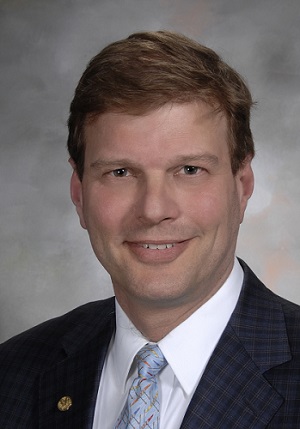Dr. Arnold-Peter C. Weiss, a University Orthopedics hand surgeon and professor of orthopedics at the Warren Alpert Medical School of Brown University, performed a first-of-its-kind wrist surgery earlier this month in Providence. Weiss discusses the procedure and implant, both of which he helped design.
PBN: How did the wrist surgery that you recently performed differ from procedures that are traditionally done to help with wrist pain?
WEISS: The product I used to perform the wrist surgery is called the WristMotion Total Wrist Arthroplasty System. It’s a total joint replacement, which replaces the entire wrist, similar to total knee and hip replacements. This procedure is mainly performed for people who have pain and arthritis in their wrists. The older solutions for wrist replacement involved fusing it solid so there’s no motion. It’s a time-honored procedure that’s been performed for decades, but patients don’t like it because they can’t move their wrists afterwards.
Over the last few decades, different wrist replacements have been developed to help maintain motion. The problem with these older solutions is that motion was always limited to about 1/3 of normal motion and to specific directions of motion. Older wrist implants don’t allow for a “normal” range of motion. The new WristMotion implant we designed dramatically improves upon that problem and allows for near-full range of motion of the wrist in multiple directions so that people can move in the manner they are normally used to.
I performed the first WristMotion procedure last week, and we did a follow-up earlier this week. The patient is already moving his wrist one week after the surgery better than what I’ve seen from older types of wrist implants three months post-surgery. This new implant definitely improves patient functionality.
PBN: What is the implant that you used, and what is your connection to it?
WEISS: The implant I used called the WristMotion Total Wrist Arthroplasty System was designed by a company called Arthrosurface, which was recently acquired by Anika. I worked with the company to design it, drawing from the research our lab at Brown University has done on wrist biomechanics.
Older wrist implants don’t have a natural center of motion of the wrist, forcing them to work in an unnatural manner. Designing the WristMotion implant involved a lot of lab work, trying out different things until we got it perfect so that it actually mimics the natural center of motion of the wrist. That’s the big difference between this new implant and previous implants over the last couple decades.
PBN: What conditions is the implant designed to provide relief from?
WEISS: The WristMotion implant is mainly used to treat wrist arthritis. It is a pretty significant problem; I see at least three to four patients a week that have significant pain in their wrist due to arthritis, ligament damage, wear and tear, etc. In some cases, the arthritis is so bad that you need to replace the whole wrist. This implant is designed to alleviate pain and improve functionality and motion due to severe wrist arthritis.
PBN: Is the implant officially on the market right now?
WEISS: Yes, this implant has been cleared by the FDA [Food and Drug Administration]. I, along with a few other prominent hand surgeons who are familiar with the implant design, have already started using it on patients. At the end of September, there will be a big meeting of hand surgeons where this will be displayed for surgeons to see and I will be giving a lecture on the implant. I anticipate by the end of September, it will be widely available.
PBN: What sort of training would surgeons need to complete before using the implant?
WEISS: Doing a wrist replacement isn’t easy. Physicians who have done wrist replacements before would probably be able to follow the technique manual for the WristMotion implant. But surgeons who haven’t could go to a lab to see how it’s done and learn how to perform the procedure on a cadaver. There are also society meetings where hand surgeons get together for training. I frequently have hand surgeons come see how the procedure is done live in our operating rooms, which is an excellent way to learn the technique and tips for a successful outcome.
Elizabeth Graham is a PBN contributing writer.











